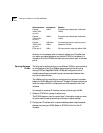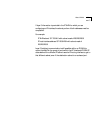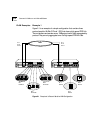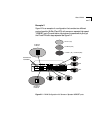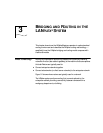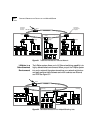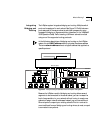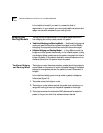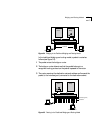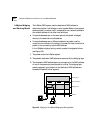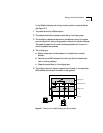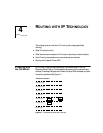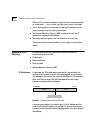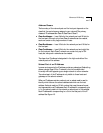
3-4 CHAPTER 3: BRIDGING AND ROUTING IN THE LANPLEX® SYSTEM
In the traditional model, if you want to increase the level of
segmentation in your network, you must create additional subnets and
assign new network addresses to your existing hosts.
Bridging and
Routing Models
The way routing is implemented in the LANplex system differs from
how bridging and routing usually coexist in a system.
■ Traditional Bridging and Routing Model — Traditionally, bridging and
routing are peer entities; either a packet is bridged or routed. Packets
belonging to recognized protocols are routed; all others are bridged.
■ LANplex Bridging and Routing Model — In the LANplex model, the
bridge and router operate hierarchically on the LANplex system, routing
over bridging. When a packet enters the system, the system first tries to
bridge the packet. If the packet’s destination network address is not on
the same subnet, then the system routes the packet.
Traditional Bridging
and Routing Model
The bridge or router determines whether a packet should be bridged or
routed based on the protocol to which the packet belongs. If the packet
belongs to a recognized protocol, the packet is routed. Otherwise, it is
bridged.
In the traditional bridging and routing model, a packet is bridged as
follows (see Figure 3-4):
1 The packet enters the bridge or router.
2 The bridge or router determines that the packet does not belong to a
recognized routing protocol, so the packet is passed to the bridge.
3 The bridge examines the destination MAC address and forwards the
packet to the port on which that address has been learned.



